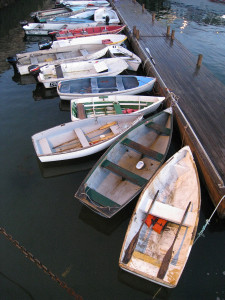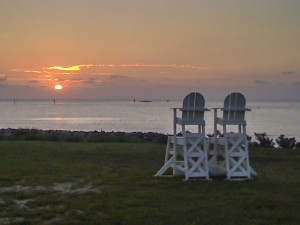f32 photography is an exploration into a long-term avocational interest in capturing the “found” world. My father was an accomplished photographer, and as a child I was fascinated with his cameras. I received a Kodak Instamatic camera in 1964, and the “hook” was firmly set. Many of the photographs on this website were captured using a variety of film cameras and film emulsions, most between 1975 and the present. Since 2005, most of the images I’ve made have been captured using digital cameras.
 In the tradition of Group f64, the collection of West Coast photographers formed decades ago, my photography rejects the pictorialist school and emphasizes sharply-focused photographs of the world in its natural state. The photographs shown here are not composite photographs, nor are they retouched (other than to correct blemishes or scratches)– they represent the scene as I saw it at the moment. The photographs, and the scenes they represent, speak for themselves.
In the tradition of Group f64, the collection of West Coast photographers formed decades ago, my photography rejects the pictorialist school and emphasizes sharply-focused photographs of the world in its natural state. The photographs shown here are not composite photographs, nor are they retouched (other than to correct blemishes or scratches)– they represent the scene as I saw it at the moment. The photographs, and the scenes they represent, speak for themselves.
I’m drawn especially to both grand landscapes and geometric shapes. I count among my influences Ansel Adams, Edward Weston, Galen Rowell, Timothy O’Sullivan, Bruce Barnbaum, John Sexton, and Laszlo Moholy-Nagy. Adams, O’Sullivan, and Rowell are best known for their epic landscapes, while Weston, Barnbaum, and Sexton are known for both grand landscapes and small, intimate scenes. Weston, Moholy-Nagy and Barnbaum combine an eye for geometry and sinuous curves– Weston’s photographs of peppers and of nudes, and Barnbaum’s breathtaking photographs of slot canyons are prime examples.
In 2000 I attended a workshop in Yosemite National Park, conducted by Washington State-based photographer Bruce Barnbaum, and sponsored by the Ansel Adams Gallery. During the portfolio review process, I heard Bruce ask students the same question: “What are you trying to say with your photographs?” Most had no coherent answer, nor did I. It wasn’t until after the workshop that I came across the answer I needed. I’m not trying to say anything with my photographs; I’m just trying to listen.
About f32 photography
The term “f32” refers to a standard f-stop, or aperture, of a camera lens. An f-stop represents a ratio of the size of the opening in the lens to the focal length of that lens (f32 is a ratio of 1:32). A small f-stop number represents a relatively larger opening, while a larger f-stop number represents a relatively smaller opening. F-stops are important in photography because they help determine the amount of light that reaches the film (or sensor). They are also important, however, in that they alter the apparent depth of field of the photograph, and thus alter both the relative sharpness of the photo, as well as the range of objects in focus in the photograph. An f stop of f32 is a relatively small aperture, and thus produces a photograph with a fair degree of sharpness, and lots of depth of field (focus). The actual f-stops used to make these photographs varies from f8 to f90, but the resulting photographs share the same fundamental characteristics.
f32 photography is not intended to be a business, but rather a forum to present some of my favorite images. The images are generally not for sale, but if you have an interest in acquiring one of these photographs, or seek permission to reproduce any of the images contact me via the information on the Contact page.
Photographic Process
Between 1995 and 2005, I worked primarily in silver-based film, with cameras that employed either medium- (2″x2″) or large-format (4″x5″) film. The film was processed using traditional wet-processing techniques, and prints made on an Omega D5-XL enlarger– a very organic way to work, but a decidedly environmentally unfriendly method as well! Traditional silver-based photography requires the use of several highly toxic compounds, and a quantity of silver (a heavy metal) is lost during the process and introduced into the wastewater system.
The use of larger film sizes, particularly the large-format field camera, fundamentally changes the way one works. The traditional field camera produces an image on the ground glass at the back of the camera; the image is both upside down and reversed. This is a very different orientation than one is accustomed to seeing through a camera viewfinder, and the odd orientation requires careful and thoughtful process. Scenes must be framed carefully, and the camera adjusted in minute increments to maintain intended depth of focus. The work is done under a dark cloth with the use of a small magnifier to examine the dim image on the ground glass carefully. Exposure for the film is determined using a one-degree spot meter. Readings are taken of very bright, very dark, and average areas of brightness. The photographer must then determine how to fit the range of brightness in the scene into the range the film can capture. I employ Ansel Adams’ Zone System, where the goal is to visualize the final print before the shutter is released. This requires making decisions not only about exposure, but also about film development and paper choice. Careful notes are a necessity! Finally, film is both expensive and bulky to carry, and film holders are heavy. Spending a day hiking with tripod, 25 pounds of camera gear, water, and food makes one parsimonious with the exposure of film. Although it sounds like a very inefficient and tedious process, the results can be remarkably satisfying; eventually, the process itself becomes almost Zen-like.
With my move to digital capture, the process of image capture is simplified, but the image preplanning is just as important. Digital processing using Camera Raw provides an unprecedented degree of post-exposure adjustment, which has allowed me to salvage some otherwise poorly-exposed images, correct for lens distortion, color balance, and selectively apply contrast control to small portions of the image– all before importing the image into Photoshop! Images made on film and scanned to digital can also be manipulated in Camera Raw, but without some of the adjustments made available through a Raw file.
Thanks to Mike Harris for his technical expertise.
Thanks to Bob Tryanski for inspiration and encouragement.
